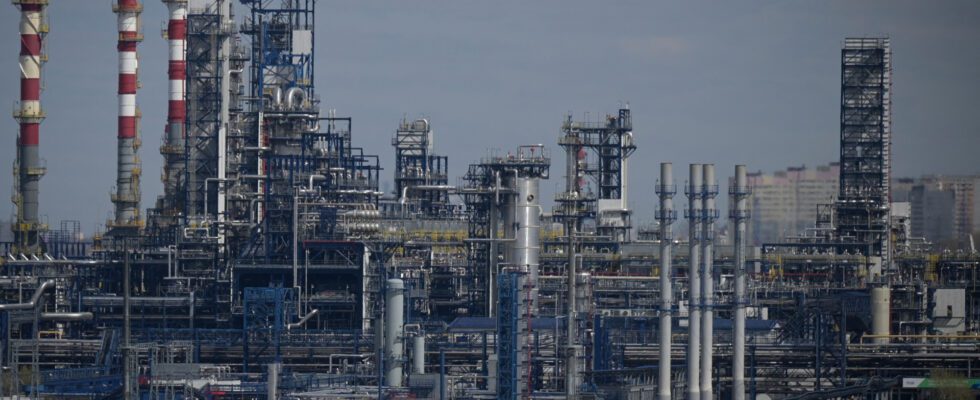The tanks of the Russian army had not even crossed the Ukrainian border yet that the European Union was already indulging in a first salvo of sanctions. Moscow had just recognized the independence of the pro-Russian separatist territories of Donetsk and Luhansk, a real prelude to the outbreak of war. In response, as of February 23, 2022, the EU decided to limit Russia’s ability to access European capital markets and financial services. A year later, the West adopted a total of nine sets of sanctions aimed in turn at transport, banking, oil and even Russian gold. But while Bruno Le Maire, the Minister of the Economy, predicted a year ago “the collapse of the Russian economy” – before later regretting his remarks – the reality appears much more nuanced.
“It was quite daring to make such a prediction”, confirms to Europe 1 Sylvie Matelly, economist and deputy director of the Institute for International and Strategic Relations (IRIS). No doubt Bercy had not imagined that the IMF (international monetary fund) would be counting on a growth of 0.3% of the Russian economy in 2023.
Soaring oil prices keep the economy afloat
It must be said that Moscow was able to count on strong allies to resist the cyclone. “We knew that China, for example, had the possibility of helping Russia to circumvent these sanctions. Moscow managed to find alternatives via other partners”, advance Sylvie Matelly, stressing that only the Westerners had aligned on these penalties. Certainly massive, but not enough to really plunge the Russian economy. Israel, yet a historic ally of the United States, has always refused to join in the chorus of sanctions, fearing for its economic interests. “In this diplomacy where everyone plays their own card and their own interest, we end up with sanctions that have relatively little short-term effectiveness because they are easier to circumvent,” argues Sylvie Matelly.
The economist then lists the various levers, activated by the Kremlin, to contain the deleterious effects of the sanctions. “Russia was first able to count on significant financial reserves that it had accumulated over several years. Then there was the policy pursued by the central bank with the blocking of the ruble and a system of exchange controls ( to prevent a currency crisis, Moscow has banned converting rubles into dollars, editor’s note). Measures to which must be added the explosion of the price of hydrocarbons on the world market. “The gas embargo has still not started. However, the Russian economy is 40% dependent on the export of hydrocarbons. Even if Russia exported less in 2022, this was largely offset by the increase prices”, further notes the expert. According to the International Energy Agency, Moscow has seen its gas revenues jump by 80%.
Consumption and imports at half mast
If Russia has therefore managed to limit the breakage brilliantly, its economy remains weakened by these successive sanctions. “In 2022, Russian GDP fell by 2%,” recalls Sylvie Matelly. A contraction of the economy, partly linked to drastically reduced household consumption. “It is probably the local population that is most affected because Russia is a rentier economy, which matters enormously. With the sanctions, this is no longer possible and this generated high inflation at the start of the war” , says the Deputy Director of IRIS.
Moreover, this drastic reduction in imports complicates supply in certain sectors of activity. “We can in particular cite automotive components which sometimes struggle to arrive”, illustrates Sylvie Matelly. Renault and Stellantis indeed very quickly announced their withdrawal from the country, reducing to nothing the flourishing activity of their factories. And if the Europeans manage to draw a definitive line on the hydrocarbons coming from Moscow, the Russian economy could find it difficult to recover.
